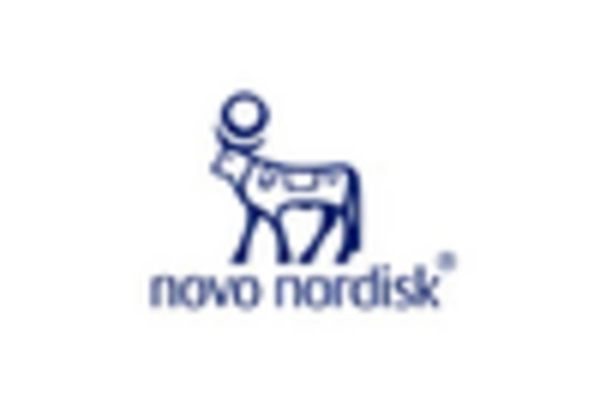Rising Prevalence of Diabetes
The increasing prevalence of diabetes in the US is a primary driver of the diabetes market. According to the Centers for Disease Control and Prevention (CDC), approximately 34.2 million Americans, or 10.5% of the population, have diabetes. This growing number is expected to rise, leading to heightened demand for diabetes management products and services. The diabetes market is projected to reach $100 billion by 2026, driven by the need for innovative treatment options and monitoring devices. As the population ages and lifestyle-related factors contribute to the rise in diabetes cases, the market is likely to expand further, necessitating advancements in technology and healthcare solutions to manage this chronic condition effectively.
Supportive Government Policies
Supportive government policies play a pivotal role in shaping the diabetes market. Legislative measures aimed at improving access to diabetes care and treatment are being implemented at both state and federal levels. For instance, initiatives to lower insulin costs and expand insurance coverage for diabetes management are gaining momentum. In 2025, it is anticipated that government funding for diabetes research and public health initiatives will increase by 15%, further bolstering the market. These policies not only enhance patient access to necessary treatments but also encourage innovation within the diabetes market, fostering a more robust healthcare ecosystem.
Growing Awareness and Education
There is a notable increase in awareness and education regarding diabetes management among healthcare professionals and patients. Initiatives aimed at educating the public about diabetes prevention and management are gaining traction, contributing to the growth of the diabetes market. Organizations such as the American Diabetes Association are actively promoting awareness campaigns, which have led to improved understanding of the disease. This heightened awareness is likely to result in more individuals seeking medical advice and treatment, thereby increasing the demand for diabetes-related products and services. As a result, the diabetes market may experience significant growth as more people become proactive in managing their health.
Technological Integration in Healthcare
The integration of technology into healthcare practices is transforming the diabetes market. Innovations such as telemedicine, mobile health applications, and wearable devices are enhancing patient engagement and self-management. In 2025, it is estimated that the market for diabetes management apps will reach $5 billion, reflecting the growing reliance on technology for monitoring and managing diabetes. These advancements not only improve patient outcomes but also streamline healthcare delivery, making it more efficient. As technology continues to evolve, the diabetes market is likely to benefit from increased accessibility and convenience for patients, further driving market growth.
Increased Investment in Research and Development
Investment in research and development (R&D) within the diabetes market is crucial for fostering innovation and improving treatment options. Pharmaceutical companies and biotech firms are allocating substantial resources to develop new medications, insulin delivery systems, and continuous glucose monitoring devices. In 2025, R&D spending in the diabetes sector is expected to exceed $20 billion, reflecting a commitment to addressing the diverse needs of patients. This influx of funding is likely to accelerate the introduction of novel therapies and technologies, enhancing patient outcomes and driving market growth. As competition intensifies, companies that prioritize R&D may gain a competitive edge in the diabetes market.

















Leave a Comment